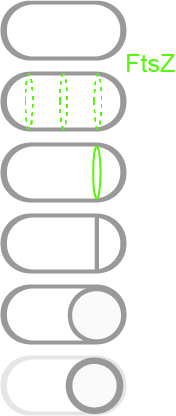Research
Asymmetric division site selection in Bacillus subtilis

Endospore formation (sporulation) in Bacillus subtilis is an example of bacterial cell differentiation process - where the progeny appears nothing like the parental cell even though the genetic makeup of the two cells are identical. The key hallmark of the sporulation process is the manifestation of an asymmetrically placed septum. How cells that normally divide in the middle are able to *decide* to undergo asymmetric division is a fundamental question that we aim to address in our lab. During this step, a tubulin-like cytoskeletal protein, FtsZ, which usually assembles at the medial division site as a ring is repositioned to polar positions. Although a few proteins that could assist in this process have been noted in the literature, the precise mechanism by which it is executed remains to be investigated. We have identified a new role for division protein, DivIVA, in asymmetric cell division (Eswaramoorthy et al., PLoS Genetics 2014). We are in the process of further elucidating how asymmetric cell division is accomplished in B. subtilis. Apart from the perspective of cell division, we are also interested in studying the pathways that lead to the initiation of sporulation (see our publications on this topic). Our findings and knowledge generated will be utilized to investigate sporulation in the pathogenic cousins of B. subtilis: anthrax-causing Bacillus anthracis and colitis-causing Clostridium difficile.